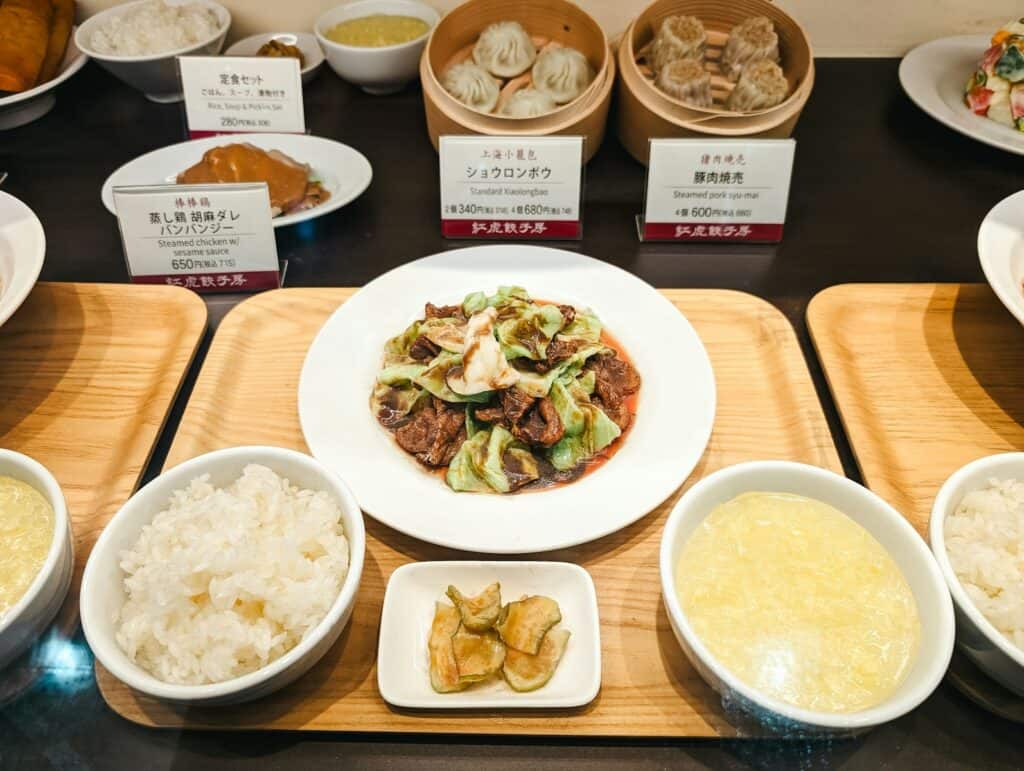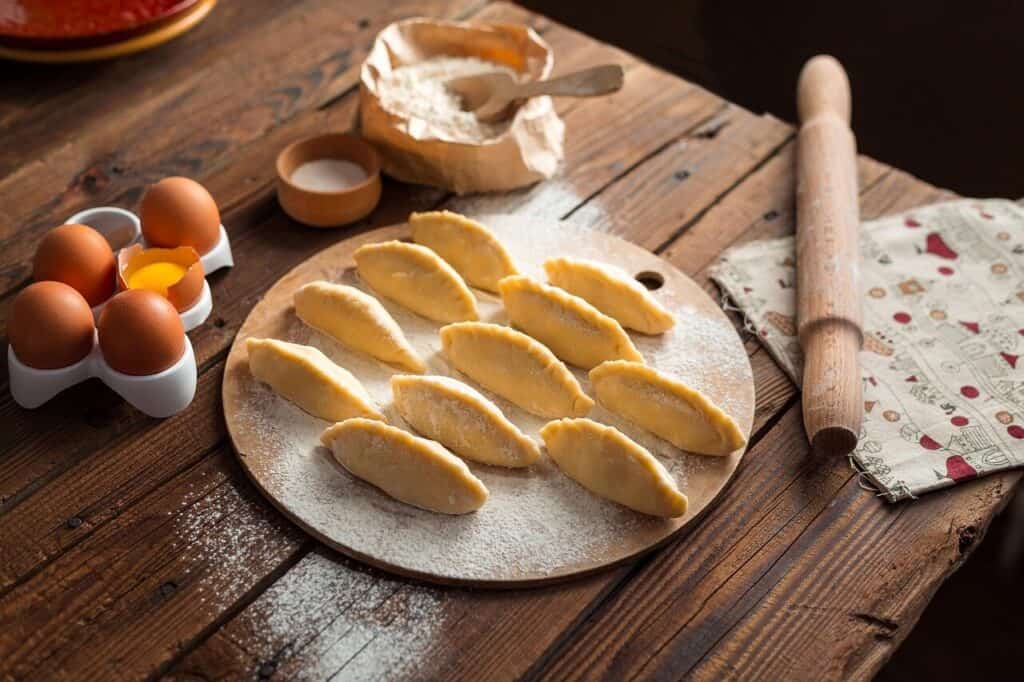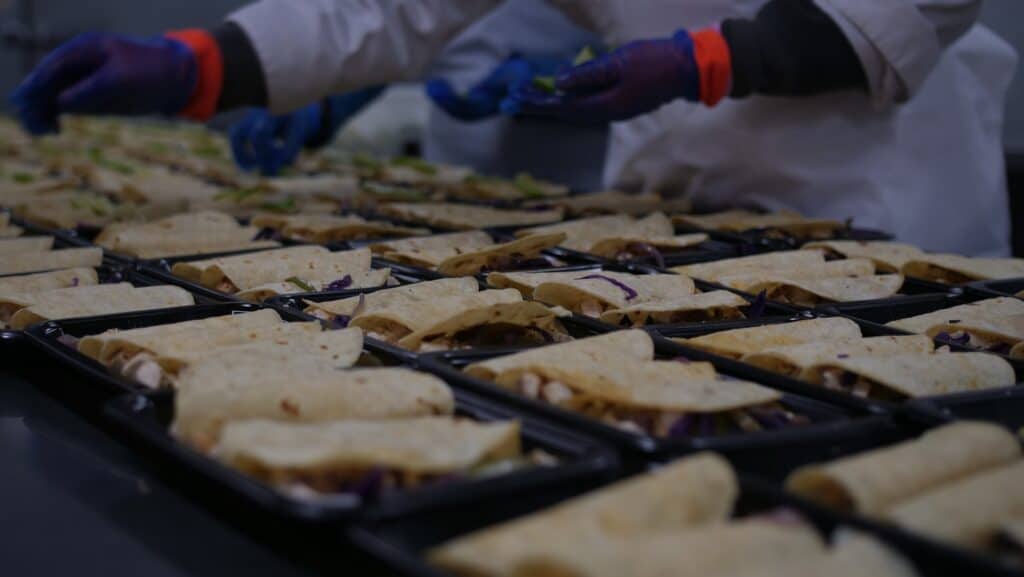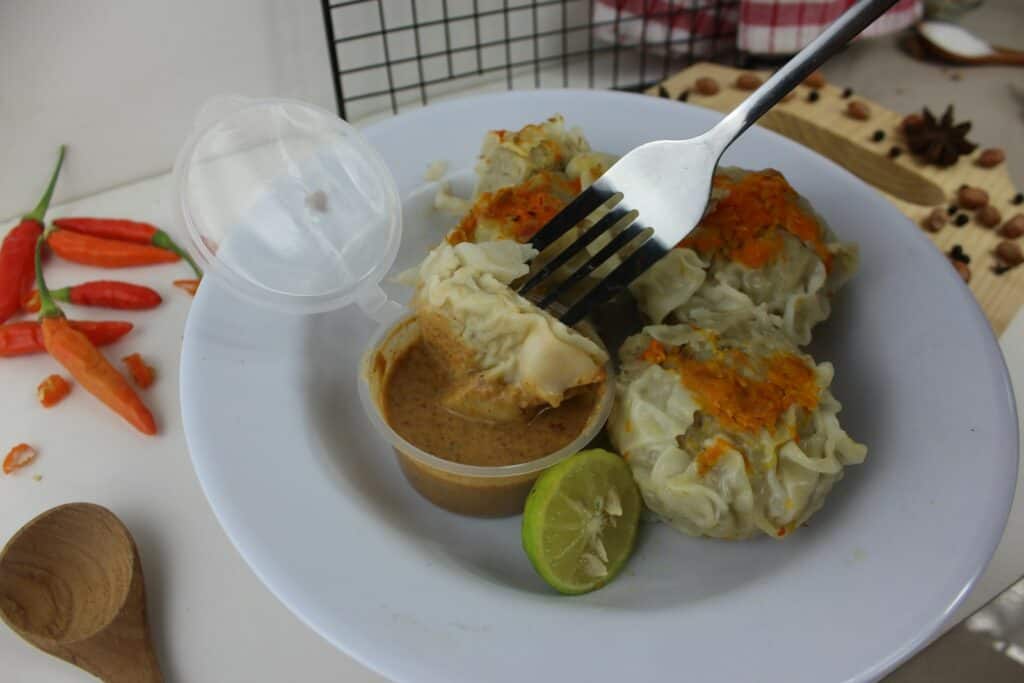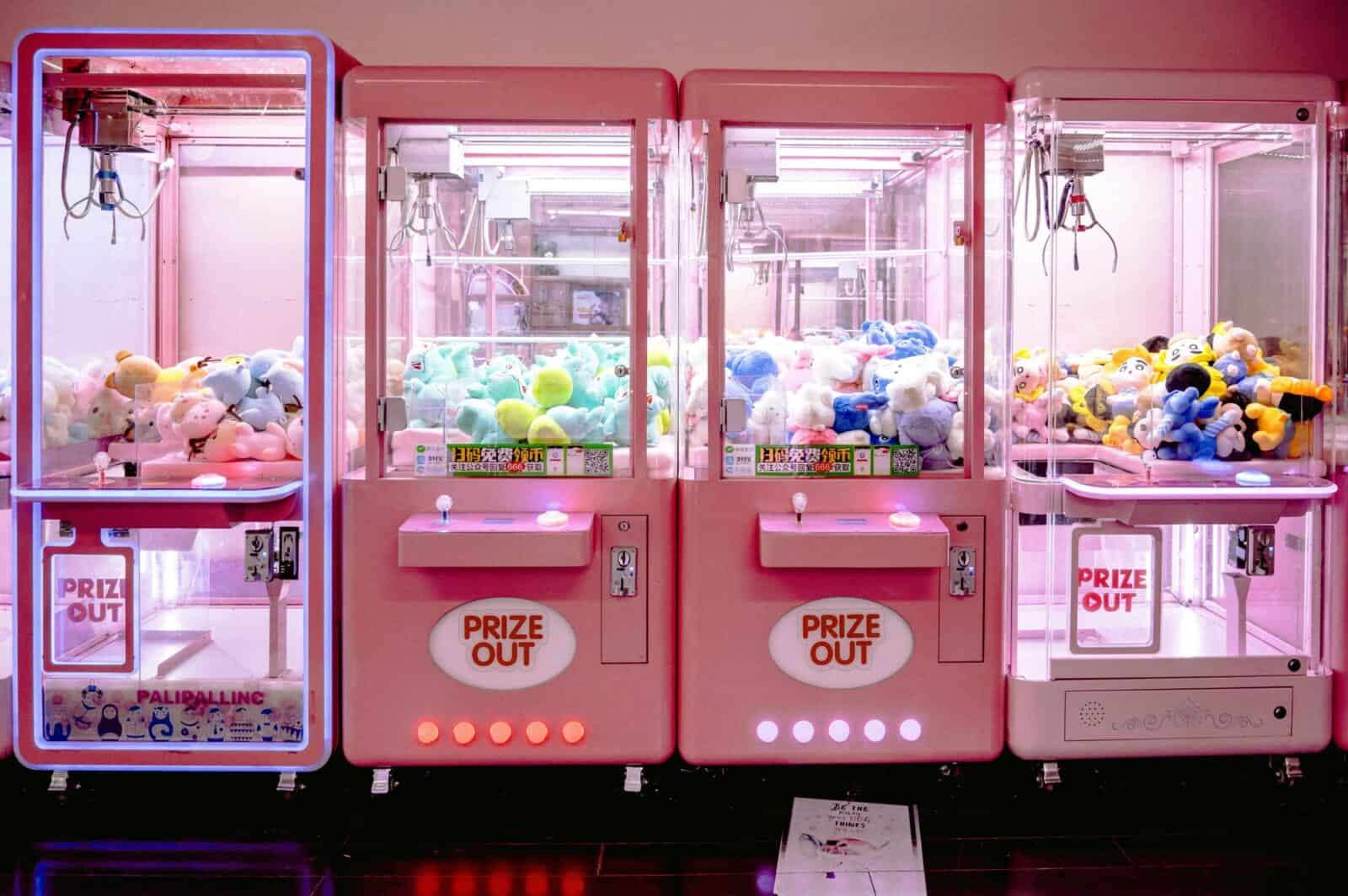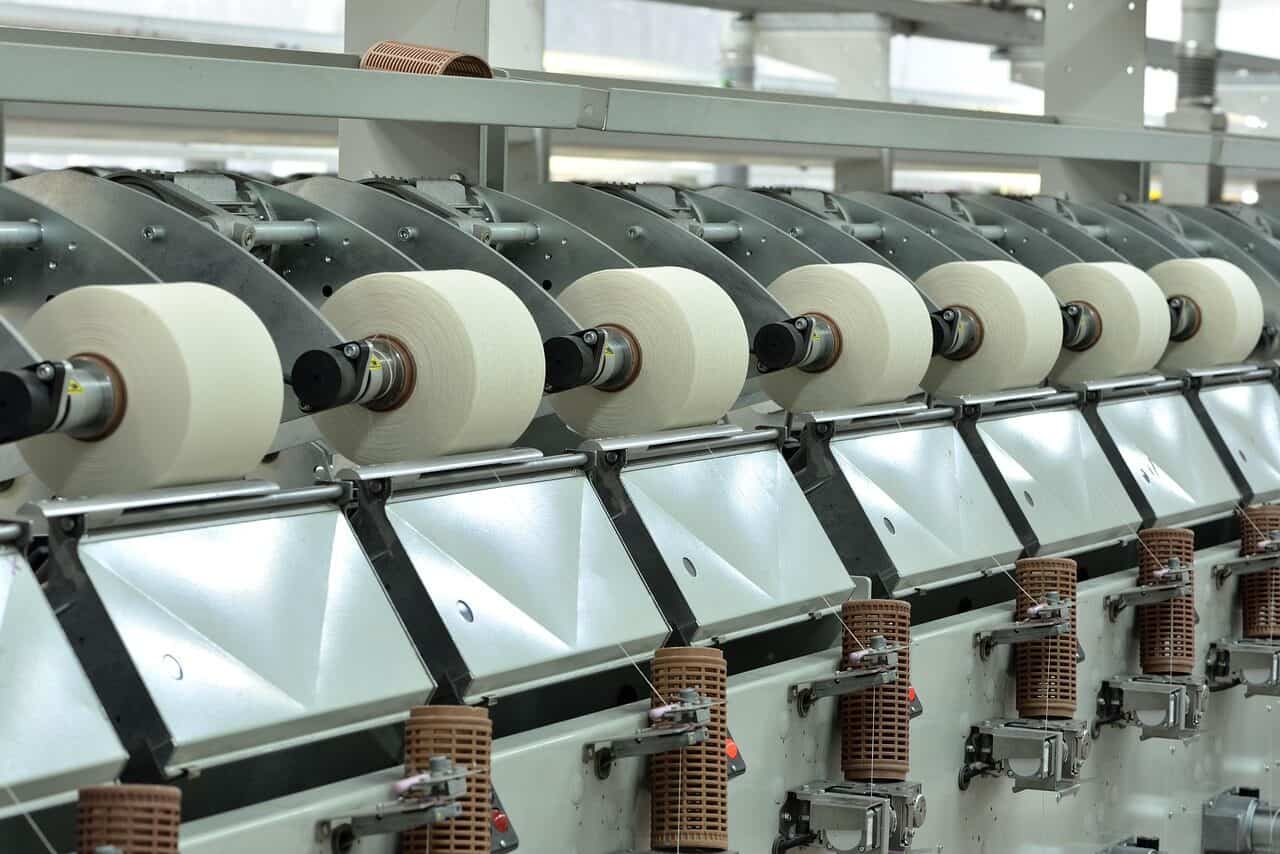Полное руководство по проверке микробов и поддержанию высокого качества при производстве печенья
Введение

Печенье, бисквиты и крекеры составляют огромную часть бизнеса по производству закусок во всем мире. Люди часто думают, что они безопасны, потому что в них мало воды. Однако такое мнение может быть опасным и привести к неосторожности. Хотя небольшое количество воды останавливает рост большинства бактерий, это не делает такие продукты полностью безопасными для микробов. Некоторые вредные микроорганизмы, такие как жесткие плесени, которые любят сухие места, все равно могут расти и вызывать преждевременную порчу продуктов, что приведет к большим денежным потерям. Хуже того, сильные микроорганизмы, вызывающие заболевания, могут выжить в процессе выпечки и остаться в готовом продукте, создавая серьезный риск для здоровья людей и подрывая репутацию компании. Всего один отзыв продукта может разрушить десятилетия доверия клиентов.
Эта статья представляет собой полный руководство для специалистов по пищевой промышленности и качеству работников по контролю. Мы дадим вам пошаговый план создания эффективной программы проверки на наличие микробов, разработанной специально для производства печенья. Мы разберем весь производственный процесс, от получения сырья до упаковки готовой продукции, найдем основные опасности и объясним эффективные способы борьбы с ними. Наша цель - не просто следовать правилам, а дать вам возможность создать передовую систему качества, которая обеспечит безопасность продуктов питания, защитит срок их годности и укрепит репутацию вашего бренда.
Понимание мира микробов
Чтобы эффективно бороться с микробами при производстве печенья, мы должны сначала понять уникальную среду, в которой они обитают. В отличие от продуктов с большим количеством воды, где рост бактерий является главной проблемой, в печенье проблема заключается в выживании и порче специализированными организмами. Научные правила, регулирующие эту среду, являются основой любого эффективного контроль качества печенья программа.
Роль активности воды
Активность воды (a_w), а не содержание влаги, является единственным наиболее важным фактором, определяющим устойчивость печенья к микробам. Она измеряет количество “свободной” воды, которую микробы могут использовать для своих жизненных процессов. Чистая вода имеет a_w, равный 1,0. Большинству бактерий для роста требуется a_w более 0,90, поэтому они не размножаются в правильно испеченном печенье, активность воды в котором обычно ниже 0,6.
Однако это не означает, что в продукте нет микробов. Ключевое различие заключается в росте и выживании микробов. В то время как низкий уровень влажности останавливает размножение, многие болезнетворные микроорганизмы могут оставаться в спящем состоянии в течение всего срока годности продукта. Более того, определенная группа микроорганизмов, известных как экстремофилы, прекрасно приспособлена к таким условиям низкой влажности. К ним относятся ксерофильные (сухолюбивые) плесени и осмофильные (сахаролюбивые) дрожжи, которые являются основной причиной порчи продуктов с низким содержанием влаги. Понимание a_w имеет решающее значение для установления правильных параметров выпечки и требований к готовому продукту.
Основные враги микробов
Враги, с которыми мы сталкиваемся при производстве печенья, отличаются от врагов во многих других областях пищевой промышленности. Это либо высокоспециализированные организмы, вызывающие порчу, либо исключительно выносливые микроорганизмы, вызывающие заболевания.
Порченые организмы
- Ксерофильные плесени: Виды из родов *Aspergillus* и *Penicillium* являются наиболее распространенной причиной видимой порчи. Они могут расти при уровне a_w до 0,60, образуя видимые пушистые колонии, неприятный запах и, в некоторых случаях, вредные микотоксины, такие как афлатоксины.
- Осмофильные дрожжи: В печенье с начинками или покрытиями с высоким содержанием сахара проблемой могут стать дрожжи, такие как *Zygosaccharomyces rouxii*. Они процветают в среде с высоким содержанием сахара и низким содержанием влаги и могут вызывать брожение, выделение газа и вздутие упаковки.
Угрозы, вызывающие заболевания
- *Salmonella spp.*: Этот вид остается наиболее опасным для хлебопекарной промышленности. Ее часто находят в сырых ингредиентах, таких как яйца, мука и какао. Очень важно, что термостойкость *Salmonella* резко возрастает при снижении активности воды, что означает, что она может выжить при выпечке, которая была бы смертельной для продукта с высокой влажностью. Количество *Salmonella*, необходимое для возникновения заболевания, может быть очень незначительным, поэтому ее присутствие в готовых к употреблению продуктах, таких как печенье, представляет серьезную угрозу для здоровья населения.
- *Стафилококк золотистый (Staphylococcus aureus): Эта бактерия обычно живет на коже человека и в носовых ходах. Хотя ее легко уничтожить при запекании, она может попасть в продукт после запекания при неправильном обращении. Если условия позволяют, она может вырабатывать термостабильные токсины, которые вызывают пищевые заболевания, даже если бактерии впоследствии будут уничтожены.
- *Cronobacter sakazakii*: Появившийся микроорганизм, вызывающий беспокойство, *Cronobacter* исключительно устойчив к сухим условиям и был связан с тяжелыми заболеваниями у младенцев и людей со слабой иммунной системой. Его присутствие вызывает серьезную озабоченность, если ингредиенты, используемые в производстве печенья, также используются совместно с ингредиентами детской смеси или производятся рядом с ними.
Составление карты рисков для микробов
Продуманная программа обеспечения безопасности пищевых продуктов требует тщательного анализа всей производственной цепочки. Составив схему технологического процесса от начала до конца, мы можем выявить потенциальные точки заражения и установить целевые меры контроля. Такой анализ опасности является основой любого плана HACCP и определяет всю стратегию анализа микроорганизмов.
Контроль сырья
Подавляющее большинство микробных загрязнений попадает на предприятие через сырье. Слабая программа утверждения поставщиков - это путь к провалу. Каждый ингредиент должен быть тщательно проверен, особое внимание должно уделяться продуктам повышенного риска.
- Мука и зерно: В них может содержаться значительное количество спор плесени и термостойких бактерий, таких как *Bacillus cereus*. В то время как вегетативные клетки погибают во время выпечки, споры могут выжить и являются индикатором общего качества сырья.
- Сахар и сиропы: Жидкий сахар и сиропы могут стать источником осмофильных дрожжей, если с ними неправильно обращаться и хранить.
- Жиры и масла: Обычно они не представляют особого риска, но могут поддерживать рост микроорганизмов, разлагающих жиры, что приводит к прогорканию и появлению неприятного привкуса.
- Яйца, молочные продукты и шоколад: Это ингредиенты с высоким риском заражения *Salmonella*. Сухие яйца и сухое молоко должны поставляться от надежных поставщиков, имеющих эффективные программы борьбы с болезнетворными микроорганизмами. Шоколад также является известным носителем *Salmonella*.
- Орехи, специи и какао: эти ингредиенты известны тем, что содержат большое количество микробов, включая плесень и *Salmonella*. Их часто собирают и обрабатывают в условиях, где загрязнение является обычным делом.
Меры контроля на этом этапе не подлежат обсуждению. Они включают в себя требование предоставления сертификата анализа (COA) при каждой поставке, внедрение строгой программы проверки и аудита поставщиков, а также проведение собственных целевых пищевых испытаний поступающих материалов с высоким уровнем риска для проверки заявлений поставщиков.
Таблица 1: Общие опасные микроорганизмы в сырье для печенья
| Категория ингредиентов | Первичная опасность микробов | Рекомендуемый контроль/тестирование |
| Зерновые муки | Количество аэробных пластинок (APC), плесени, *Bacillus cereus*. | COA поставщика, периодическое тестирование на общее количество жизнеспособных клеток (TVC) и плесени |
| Яйца (жидкие/порошок) | *Salmonella spp.*, *Listeria* | 100% тестирование на *Salmonella* на партию, валидация пастеризации |
| Молочные продукты (сухое молоко) | *Salmonella*, *Staphylococcus aureus*, APC | Поставщик COA, скрининг болезнетворных микробов |
| Орехи и семена | *Сальмонелла*, афлатоксины (из плесени) | Анализ на афлатоксин, проверка на *Salmonella*, обжарка/термообработка |
| Шоколад и какао | *Сальмонелла*, осмофильные дрожжи | Гарантия поставщика, скрининг болезнетворных микробов для какао-порошка |
Внутрипроизводственный контроль
Даже при использовании чистого сырья в процессе обработки может произойти загрязнение.
- Смешивание: Добавление воды во время замеса временно повышает активность воды, что потенциально может привести к появлению микробов. Качество используемой воды имеет решающее значение, а очистка миксеров и оборудования для обработки теста чрезвычайно важна для предотвращения перекрестного заражения.
- Выпечка: Это основной “шаг уничтожения” и критическая контрольная точка (ККТ). Сочетание времени и температуры призвано уничтожить вегетативные микроорганизмы, вызывающие заболевания, такие как *Salmonella*, и снизить общую микробную нагрузку. Однако, как уже говорилось, эффективность этого этапа снижается в тесте с низким содержанием влаги. Например, опубликованные исследования показывают, что D-значение (время, необходимое для уничтожения 90% популяции при заданной температуре) для *Salmonella* может составлять более 30 минут при 90°C в условиях низкой влажности, в то время как в продуктах с высокой влажностью этот показатель составляет всего несколько секунд. Это подчеркивает необходимость точной валидации процесса выпечки.
- Охлаждающие туннели: Это, пожалуй, самый критический момент для повторного загрязнения. Когда теплое, влажное печенье проходит через длинные охлаждающие туннели, оно становится очень восприимчивым к загрязняющим веществам, передающимся воздушно-капельным путем. Капли воды на потолке туннеля могут попадать на продукты, создавая влажные пятна, в которых может расти плесень. Плохая фильтрация воздуха может привести к попаданию спор плесени и других микроорганизмов из заводской среды прямо на поверхность продукта.

Обработка после выпечки
После этапа уничтожения любой контакт с микробами является событием повторного заражения.
- Начинки, кремы и покрытия: Нанесение кремов, шоколада или джемов после выпечки может создать новые риски для микробов. Эти добавки могут также создавать локальные зоны повышенной активности воды на границе между печеньем и начинкой, что создает условия для роста микробов.
- Обращение с персоналом и поверхности, контактирующие с пищевыми продуктами: Все поверхности, которые соприкасаются с печеньем после выпечки, являются потенциальными источниками загрязнения. К ним относятся конвейерные ленты, сортировочные столы и упаковочное оборудование. Руки сотрудников являются основным носителем *Staphylococcus aureus*. Строгое соблюдение правил личной гигиены (GMP) и программа тщательной очистки всех поверхностей, контактирующих с продуктами питания в зоне 1, являются обязательными.
- Упаковка: Конечная упаковка должна защищать печенье от влаги и проникновения микробов. Поврежденная печать может пропускать влагу извне, повышая влажность продукта и способствуя росту плесени.
Арсенал анализа
Надежный план проверки пищевых продуктов основывается на сочетании различных методов тестирования микроорганизмов. Эти тесты служат двум основным целям: измерение общей чистоты и контроля процесса (индикаторные организмы) и обеспечение отсутствия конкретных возбудителей заболеваний (патогены). Выбор правильных тестов и понимание их результаты являются ключевыми компонентами качества бисквита контроль.
Организмы-индикаторы
Эти тесты дают представление об общем состоянии микроорганизмов в продукте или окружающей среде. Высокое количество индикаторных организмов не обязательно означает, что продукт небезопасен, но оно сигнализирует о потенциальных нарушениях чистоты, качества сырья или контроля процесса, которые требуют изучения.
- Общее количество жизнеспособных бактерий (TVC) / количество аэробных пластинок (APC): Это общий показатель общего количества жизнеспособных бактерий, которые могут расти в кислородной среде. В печенье высокий показатель TVC может указывать на низкое качество сырья, недостаточное количество выпечки или значительное загрязнение после выпечки.
- Количество дрожжей и плесени: Это критический параметр качества для печенья. Поскольку эти организмы могут расти в условиях низкой влажности, их количество является прямым показателем срока годности. Высокое количество дрожжей и плесени в готовом продукте - тревожный сигнал о возможной порче.
- Энтеробактерии/Колиформы: Представители этого семейства бактерий обычно встречаются в кишечнике теплокровных животных. Хотя большинство из них не вызывают заболеваний, их присутствие на изделиях после выпечки является явным признаком нарушения правил очистки и потенциального контакта с антисанитарными условиями. *E. coli* - особый представитель этой группы, используемый в качестве прямого индикатора возможного фекального загрязнения.
Тестирование микробов, вызывающих заболевания
Эти тесты предназначены для выявления наличия определенных микроорганизмов, которые, как известно, вызывают заболевания человека. Для микробов, вызывающих заболевания, таких как *Salmonella*, существует политика нулевой толерантности. Стандартом является не низкое количество, а полное отсутствие в образце определенного размера (например, отсутствие в 25 г или для продуктов высокого риска - отсутствие в 375 г).
- Методы обнаружения *Salmonella*: Традиционные методы культивирования включают предварительное обогащение, селективное обогащение и посев на селективные питательные среды, что может занять 3-5 дней для получения результата. Современные экспресс-методы, такие как ПЦР (полимеразная цепная реакция) и ИФА (иммуноферментный анализ), стали промышленным стандартом. Эти методы позволяют получить отрицательный результат всего за 24-48 часов, что позволяет значительно ускорить выпуск продукции и быстрее реагировать в случае положительного результата.
- Тестирование на *Staphylococcus aureus*, *Listeria* и т.д.: Тестирование на *S. aureus* необходимо для оценки гигиены и методов обработки после выпечки. Тестирование на *Listeria* имеет решающее значение для окружающей среды предприятия, особенно во влажных или прохладных зонах, чтобы предотвратить ее распространение и потенциальное загрязнение продукции.
Таблица 2: Основные тесты на наличие микробов и рекомендуемые пределы для печенья
| Параметр испытания | Целевые микроорганизмы | Типичный допустимый предел (КОЕ/г) | Назначение |
| Общее количество жизнеспособных особей (TVC) | Общая популяция бактерий | < 5,000 - 10,000 | Показатель общей гигиены, качества сырья и чистоты обработки. |
| Подсчет дрожжей и плесени | Ксерофильные/осмофильные виды | < 100 - 500 | Ключевой показатель срока годности и возможности порчи. |
| Колиформы / *E. coli* | Индикаторные бактерии | < 10 / Отсутствует | Указывает на неудачную очистку или возможное загрязнение фекалиями после выпечки. |
| *Salmonella spp.* | Микроорганизм, вызывающий заболевание | Отсутствует в 25 г (или в образце большего размера) | Критический параметр безопасности пищевых продуктов; не допускается. |
| *Staphylococcus aureus* | Токсинообразующий болезнетворный микроб | < 100 | Индикатор загрязнения после выпечки в результате работы с людьми. |
Создание сильной программы контроля качества
Тестирование зародышей, несмотря на свою важность, является проверочным мероприятием. Оно подтверждает, работают ли ваши средства контроля. По-настоящему надежная программа обеспечения качества строится на профилактике. Она интегрирует тестирование в более широкую систему проактивных систем, призванных остановить заражение до того, как оно произойдет.
Внедрение HACCP
Система анализа рисков и критических контрольных точек (HACCP) - это всемирно признанная система. стандарт по профилактической безопасности пищевых продуктов. Она включает в себя систематический анализ всего процесса с целью выявления любых биологических, химических или физических опасностей и установления конкретных мер контроля для их снижения. Для производства печенья типичные CCP включают:
- CCP 1: Выпечка. Критические пределы - это минимальное подтвержденное время и температура, необходимые для достижения необходимого снижения количества целевых микроорганизмов. Мониторинг ведется непрерывно, а корректирующие действия включают в себя удержание и оценку любого продукта, произведенного за пределами этих пределов.
- CCP 2: Обнаружение металла. CCP с физической опасностью для обнаружения и отбраковки любого продукта, загрязненного металлом.
- CCP 3: Пастеризация начинок. Если используются сливочные или желейные начинки с высоким риском, этап их пастеризации должен быть CCP, а время и температура - критическими пределами.
Программа экологического мониторинга
Невоспетым героем безопасности пищевых продуктов является программа мониторинга окружающей среды (EMP). Это проактивная программа, направленная на поиск и уничтожение укрытий микробов на производстве до того, как они смогут загрязнить продукт. Хорошо продуманная EMP действует как система раннего предупреждения. В основе EMP лежит концепция зонирования:
- Зона 1: Поверхности, непосредственно контактирующие с пищей после этапа уничтожения (например, охлаждающие конвейеры, форсунки для розлива, руки сотрудников).
- Зона 2: Поверхности, не контактирующие с пищевыми продуктами, в непосредственной близости от зоны 1 (например, каркас оборудования, панели управления).
- Зона 3: Поверхности, расположенные дальше от линейка продуктов для обработки (например, полы, стоки, погрузчики).
- Зона 4: Удаленные участки за пределами технологического помещения (например, коридоры, столовые, склады).
Методы отбора проб включают в себя стерильные мазки для поверхностей, отбор проб воздуха для выявления плесени и быстрое тестирование ATP (аденозинтрифосфат), позволяющее практически мгновенно оценить эффективность очистки до начала производства.
Таблица 3: Образец графика программы экологического мониторинга (ПЭМ)
| Зона | Примеры местоположений | Микроорганизмы-мишени | Частота | Корректирующие действия |
| Зона 1 | Конвейерные ленты, постовые печи, наполнительные форсунки | APC, колиформы, *Listeria* | Ежедневно (до операции) | Остановка, очистка, дезинфекция, повторная промывка |
| Зона 2 | Каркас оборудования, панели управления | APC, Enterobacteriaceae | Еженедельник | Интенсивная уборка территории |
| Зона 3 | Полы, сливы, колеса тележек | *Листерия*, дрожжи и плесени | Ежемесячно | Глубокая уборка, пересмотр процедур уборки |
| Зона 4 | Столовые, офисы, коридоры | Общие показатели | Ежеквартально | Обзор GMPs, схемы движения сотрудников |
Составление плана тестирования
Претворение теории в практику требует структурированного подхода. Вот как мы помогаем клиентам разработать практический план анализа зародышей:
- Оценка рисков: Сначала мы оцениваем ваши конкретные продукты и процессы. Простое, обычное печенье имеет иной профиль риска, чем печенье с кремовой начинкой и шоколадной глазурью. Мы анализируем ваше сырье, планировку фабрики и программы очистки, чтобы выявить наиболее вероятные риски.
- Определение точек отбора проб: На основании оценки рисков мы определяем, где именно нужно брать пробы. Сюда входят входящее сырье (например, каждая партия яичного порошка), технологические точки (например, мазки из охлаждающего туннеля) и готовая продукция (например, составные образцы из каждого производственного дня).
- Настройка частот: Не все нужно тестировать с одинаковой частотой. Ингредиенты с высоким уровнем риска могут требовать тестирования каждой партии. Тестирование готовой продукции может быть ежедневным. Частота взятия мазков из окружающей среды определяется зоной, как указано в EMP. Частота - это переменная величина, которую часто увеличивают после получения плохого результата или строительных работ.
- Протокол "вне спецификации" (OOS): Это самый важный шаг. Мы помогаем создать четкий, письменный план действий на случай неудачи теста. Протокол OOS для положительного результата на *Salmonella* значительно отличается от протокола для высокого TVC. Он должен включать в себя немедленные шаги (удержание продукта, изоляция линий), шаги по расследованию (отслеживание, усиленное взятие мазков) и шаги по ликвидации (уничтожение продукта, выпуск продукта после дальнейшего тестирования). Хорошо задокументированный план OOS демонстрирует контроль и неоценим во время аудита или кризиса.
Устранение распространенных неисправностей
Даже в самых лучших системах могут возникать проблемы. Программа контроля качества экспертного уровня определяется не отсутствием проблем, а скоростью и точностью их решения. Вот диагностическое руководство по распространенным сбоям в работе микробов.
Проблема: видимая плесень
Вы увидите плесень на печенье задолго до окончания срока годности.
- Вероятная причина: Заражение ксерофильными плесенью, такими как *Aspergillus* или *Penicillium*, после этапа выпечки.
- Контрольный список расследований:
- Охлаждающий туннель: Есть ли видимые капли воды на потолке или стенах? Засорены или повреждены ли воздушные фильтры? Мы рекомендуем взять пробы воздуха на входе, в середине и на выходе из туннеля, чтобы определить концентрацию спор.
- Целостность упаковки: Эффективна ли герметичность упаковки? Проведите тест на проникновение красителя или вакуумный тест на упаковках из пораженной партии. Проверьте, не попадает ли внутрь влага во время хранения.
- Активность воды в продукте: Проверьте a_w печенья из пораженной партии. Если она превышает спецификацию (например, 0,7 вместо <0,6), необходимо немедленно пересмотреть параметры времени и температуры выпечки.
- Сырье: Проверьте документы, удостоверяющие личность, и протестируйте сохранившиеся образцы муки, специй или орехов, использованных в партии, на предмет необычно высокого количества плесени.
Проблема: положительный результат на сальмонеллу
Обычный тест готовой продукции дает положительный результат на *Salmonella*.
- Вероятная причина: Загрязненный сырой ингредиент или значительное перекрестное загрязнение после выпечки.
- Контрольный список расследования (анализ корневой причины):
- Изоляция и удержание: Немедленно поместите всю потенциально пораженную продукцию в резерв. Это касается как партии с положительным результатом, так и партий, произведенных до и после нее на той же линии.
- Отслеживание: Поднимите всю документацию по сырью, использованному в положительной партии. Изучите СОА поставщиков. Немедленно отправьте сохраненные образцы всех ингредиентов высокого риска (яйца, шоколад, какао, орехи) из этой партии на тестирование на *Salmonella*.
- Расследование после выпечки: Это задание по принципу “ищи и уничтожай”. Проведите интенсивное обследование всех поверхностей зон 1 и 2 от выхода из печи до упаковочной машины. Проверьте схемы движения сотрудников: есть ли пути перемещения людей или оборудования из зон с сырьем в зоны после выпечки без надлежащего контроля? Проверьте, нет ли проблем со зданием, таких как протечки крыши или вредители. деятельность вблизи производственной линии.
Проблема: высокие показатели TVC/APC
Общее количество жизнеспособных организмов в готовом продукте постоянно превышает установленные пределы.
- Вероятная причина: Общее нарушение чистоты, неэффективный процесс выпечки или постоянно некачественное сырье.
- Контрольный список расследований:
- Записи об уборке: Просмотрите отчеты о предэксплуатационных проверках и результаты тестов ATP за рассматриваемые дни. Наблюдается ли тенденция постепенного увеличения количества баллов ATP? Это говорит о том, что процедуры очистки становятся менее эффективными.
- Удостоверьтесь в валидности выпечки: Повторно проверьте “шаг уничтожения”. Поместите температурные щупы внутрь печенья в разных точках полосы печи, чтобы убедиться, что внутренняя температура достигает критического предела в течение требуемого времени.
- Спецификации сырья: Соответствуют ли ваши поставщики согласованным спецификациям TVC? Начните программу усиленного тестирования поступающих материалов для проверки. Один ингредиент с высоким содержанием ТПО, например специи, может повысить содержание ТПО во всей партии.
Заключение
Обеспечение безопасности микроорганизмов и качества печенья - сложная, но выполнимая задача. Для этого необходимо выйти за рамки устаревшего убеждения, что продукты с низким содержанием влаги безопасны по своей природе. Успех строится на нескольких ключевых столпах: глубокое понимание уникальных рисков, связанных с ксерофильными и осмофильными микроорганизмами; строгий контроль и пищевые испытания входящего сырья; научное обоснование этапа уничтожения при выпечке; и, самое главное, неустанное внимание к предотвращению повторного заражения после выпечки с помощью надежной надлежащей производственной практики и бдительной программы мониторинга окружающей среды.
Комплексный подход к проверке безопасности пищевых продуктов не должен рассматриваться как центр затрат. Это фундаментальная инвестиция. Он защищает ваших потребителей, обеспечивает репутацию вашего бренда и гарантирует долгосрочную жизнеспособность вашего бизнеса. В современной пищевой промышленности активное и прозрачное стремление к совершенству зародышей - это не просто вопрос соответствия, а прямое отражение вашего стремления к качеству, безопасности и долговечности бренда.
Часто задаваемые вопросы (FAQ)
Q1: Почему печенье нуждается в проверке на микроорганизмы, если оно имеет низкое содержание влаги?
Хотя низкая влажность подавляет рост большинства бактерий, она не устраняет все микробные риски. Ксерофильные плесени и осмофильные дрожжи все еще могут расти при уровне активности воды ниже 0,6. Кроме того, термостойкие патогены, такие как Сальмонелла могут выживать в процессе выпечки в условиях низкой влажности и сохранять жизнеспособность в течение всего срока годности продукта, представляя серьезную опасность для здоровья.
Вопрос 2: В чем разница между активностью воды (a_w) и содержанием влаги?
Содержание влаги измеряет общее количество воды в продукте, а активность воды (a_w) - количество “свободной” воды, доступной для роста микроорганизмов. Содержание влаги в печенье может составлять 5%, а a_w - 0,5, то есть большая часть воды связана с сахарами и крахмалом и недоступна для микроорганизмов. Активность воды - более важный параметр для прогнозирования устойчивости микроорганизмов.
Q3: Как часто следует проводить экологический мониторинг в разных зонах?
Частота тестирования зависит от близости зоны к продукту:
- Зона 1 (поверхности, непосредственно контактирующие с пищевыми продуктами): Ежедневно, до начала производства
- Зона 2 (поверхности, близкие к продукту): Еженедельник
- Зона 3 (полы/стоки в технологических помещениях): Ежемесячно
- Зона 4 (отдаленные районы): Ежеквартально
Частота должна увеличиться после получения положительных результатов или внесения изменений в оборудование.
Q4: Что нужно делать, если анализ на сальмонеллу дал положительный результат?
Примите эти срочные меры:
- Держите весь товар из партии, подвергшейся воздействию, и других партий продукции
- Изолируйте производственную линию для предотвращения перекрестного загрязнения
- Запустить отслеживание всего сырья, использованного в партии
- Проведите интенсивное взятие мазков из окружающей среды все поверхности после выпечки (зоны 1 и 2)
- Документируйте все и уведомить об этом свою группу контроля качества и соответствующие органы власти
Q5: Каковы наиболее распространенные источники заражения сальмонеллой при производстве печенья?
К ингредиентам, представляющим наибольший риск, относятся:
- Яйца в порошке и жидкие яйца
- Шоколад и какао-порошок
- Орехи и семена
- Мука (особенно сырая)
- Специи
Эти ингредиенты должны проходить тщательную проверку поставщиков и могут потребовать тестирования партии 100% на предмет Сальмонелла перед использованием.
Q6: Как предотвратить появление плесени в охлаждающем туннеле?
Основные меры профилактики включают:
- Установка и обслуживание высокоэффективных воздушных фильтров
- Регулярный осмотр и очистка потолков туннелей для предотвращения конденсации влаги
- Проведение периодического отбора проб воздуха для контроля уровня содержания спор плесени
- Обеспечение надлежащей вентиляции и контроля влажности
- Внедрение графика профилактического обслуживания системы охлаждения
Q7: Какова роль тестирования ATP в программе контроля качества?
Тестирование на наличие аденозинтрифосфата (ATP) обеспечивает быструю проверку эффективности очистки на месте. Он измеряет наличие органических веществ на поверхностях в течение нескольких минут, позволяя проверить чистоту до начала производства. Хотя он не выявляет конкретных патогенов, повышенные показатели ATP указывают на недостаточную очистку и возможность микробного загрязнения.
Q8: Могу ли я сократить частоту проведения испытаний после того, как мой объект будет стабильно проходить испытания?
Несмотря на то, что наличие большого опыта может позволить некоторую гибкость, частота тестирования никогда не должна опускаться ниже минимума, предусмотренного вашим планом HACCP и нормативными требованиями. Вместо этого рассмотрите возможность использования положительных результатов в качестве триггера для увеличить тестирование на время. Постоянные хорошие результаты свидетельствуют о контроле, но не должны приводить к самоуспокоению.
Q9: В чем разница между индикаторными организмами и патогенами при тестировании?
- Организмы-индикаторы (например, ТВК, колиформы и кишечная палочка) сигнализируют об общем уровне гигиены и возможных нарушениях технологического процесса. Высокие показатели не обязательно означают, что продукт небезопасен, но они указывают на проблему, требующую изучения.
- Патогены (например Сальмонелла и Листерия) являются специфическими организмами, вызывающими заболевания. Для них существует нулевая терпимость - любое обнаружение требует немедленных действий и приостановки производства.
Q10: Как я могу подтвердить, что мой процесс выпечки является эффективной “ступенью уничтожения” сальмонеллы?
Проведите исследование валидации термического процесса:
- Поместите температурные щупы внутрь печенья в нескольких местах на поясе духовки.
- Запись временно-температурных профилей для обеспечения достижения всеми продуктами подтвержденного критического предела
- Учет снижения смертоносности тепла в условиях низкой влажности (более высокие значения D)
- Документально подтвердите, что ваш процесс обеспечивает снижение уровня заболеваемости не менее чем на 5 лог Сальмонелла
- Перепроверяйте ежегодно или при изменении параметров процесса
Эта проверка должна быть выполнена квалифицированным персоналом и задокументирована как часть плана HACCP.
- Принципы и руководство по применению ХАССП - FDA https://www.fda.gov/food/hazard-analysis-critical-control-point-haccp/haccp-principles-application-guidelines
- Активность воды (aw) в продуктах питания - FDA https://www.fda.gov/inspections-compliance-enforcement-and-criminal-investigations/inspection-technical-guides/water-activity-aw-foods
- Активность воды - Википедия https://en.wikipedia.org/wiki/Water_activity
- BAM Глава 5: Сальмонелла - FDA https://www.fda.gov/food/laboratory-methods-food/bam-chapter-5-salmonella
- ISO 6579-1:2017 - Стандарт на обнаружение сальмонеллы https://www.iso.org/standard/56712.html
- Диагностическая ПЦР в реальном времени для выявления сальмонеллы в продуктах питания - PMC (NIH) https://pmc.ncbi.nlm.nih.gov/articles/PMC535175/
- Сравнение культуры, ИФА и ПЦР для выявления сальмонелл - PMC (NIH) https://pmc.ncbi.nlm.nih.gov/articles/PMC2110889/
- Обнаружение Salmonella и Listeria на поверхностях из нержавеющей стали - ScienceDirect https://www.sciencedirect.com/science/article/pii/S0956713522001645
- Руководство по подготовке планов ХАССП - USDA FSIS https://www.fsis.usda.gov/sites/default/files/media_file/2021-01/Guidebook-for-the-Preparation-of-HACCP-Plans.pdf
- Методы обнаружения сальмонеллы - экспресс-микробиология https://www.rapidmicrobiology.com/test-method/salmonella-detection-and-identification-methods


